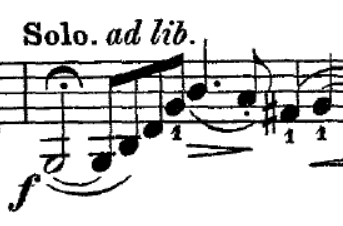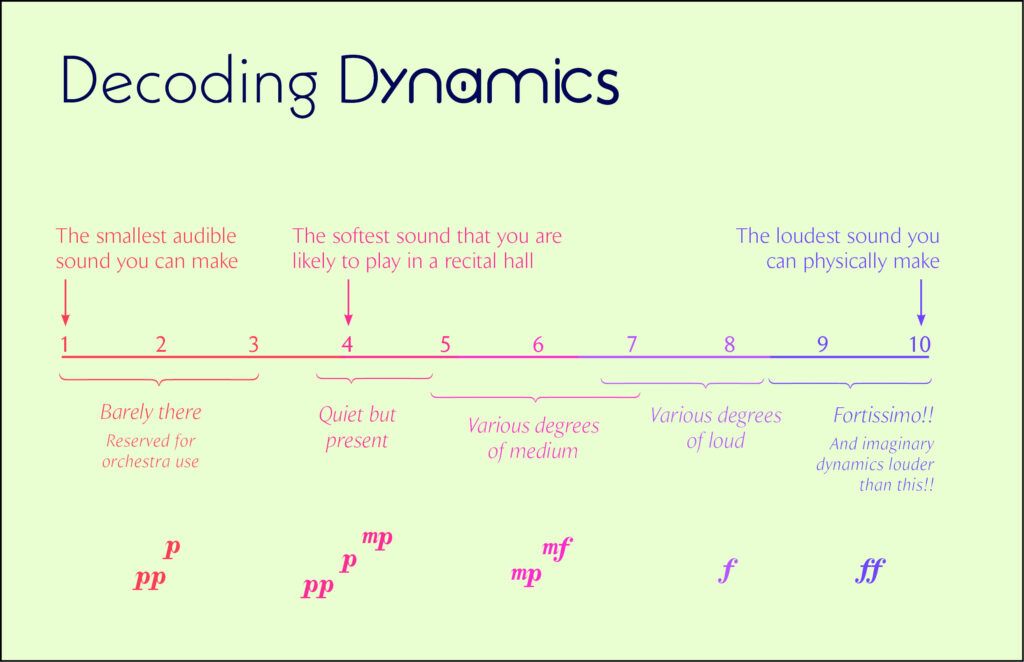I’ve recently been exploring a new way of talking about dynamics. The conventional notation is tricky because while it appears to be an objective indication of volume, it’s actually quite situational.
This is legitimately confusing for students, who tend to take dynamics fairly literally. Here are just two of the many paradoxes they will need to master:


-
The lyrical sections of a piece are often marked “piano,” but require a fairly strong tone to convey poignancy, tenderness, and depth.
-
When making a crescendo from forte to fortissimo, musicians must often drop below forte initially to create the illusion of additional volume.
There are fewer dynamic gradations available than we might wish — especially since students frequently play too softly already, making piano markings problematic.
So then, how should we mark a sequence (say, in an outer movement of Vivaldi) which requires five volumes? Do we use mp, mf, f, ff, and fff?
Over the past year or so, I’ve been increasingly moving to a 10-point scale of dynamics in my conversations with students. Here it is:

Often, simply naming the desired volume (and identifying their current volume) provides what is needed for a given student. However, if they do wish to mark a given dynamic sequence on the page, you can use boxed numbers under the staff.
(And yes, you’ll find yourself making distinctions like 5.5 and 6.8 quite often with advancing students!)
Pairing a more objective, numerical scale with the ambiguity of printed dynamics has been a game-changer for me and my students.
Let me know how it works for you!

